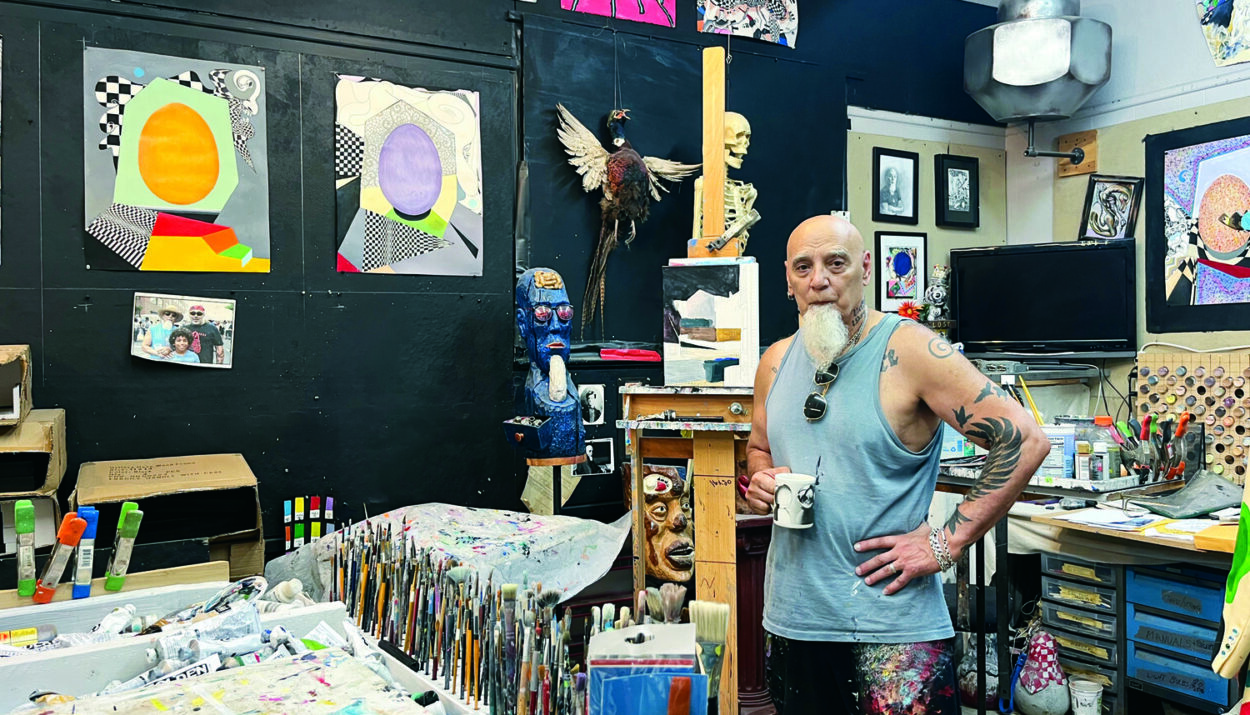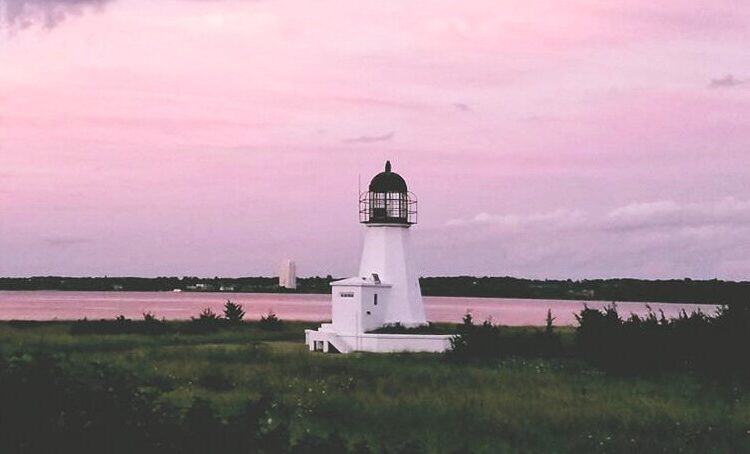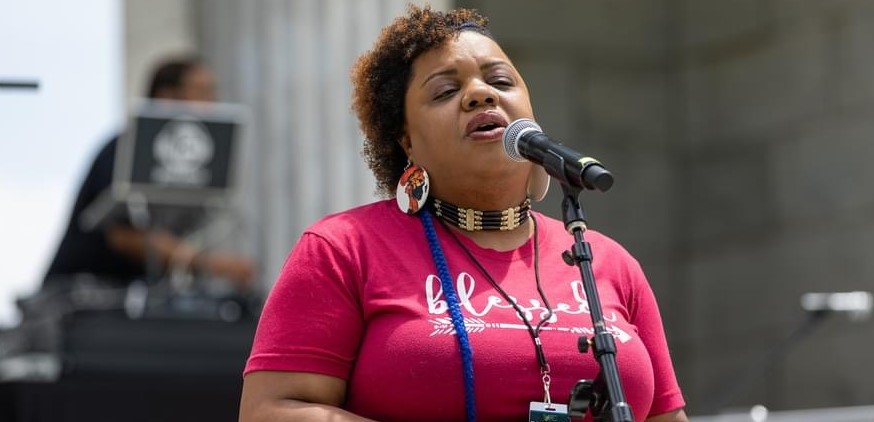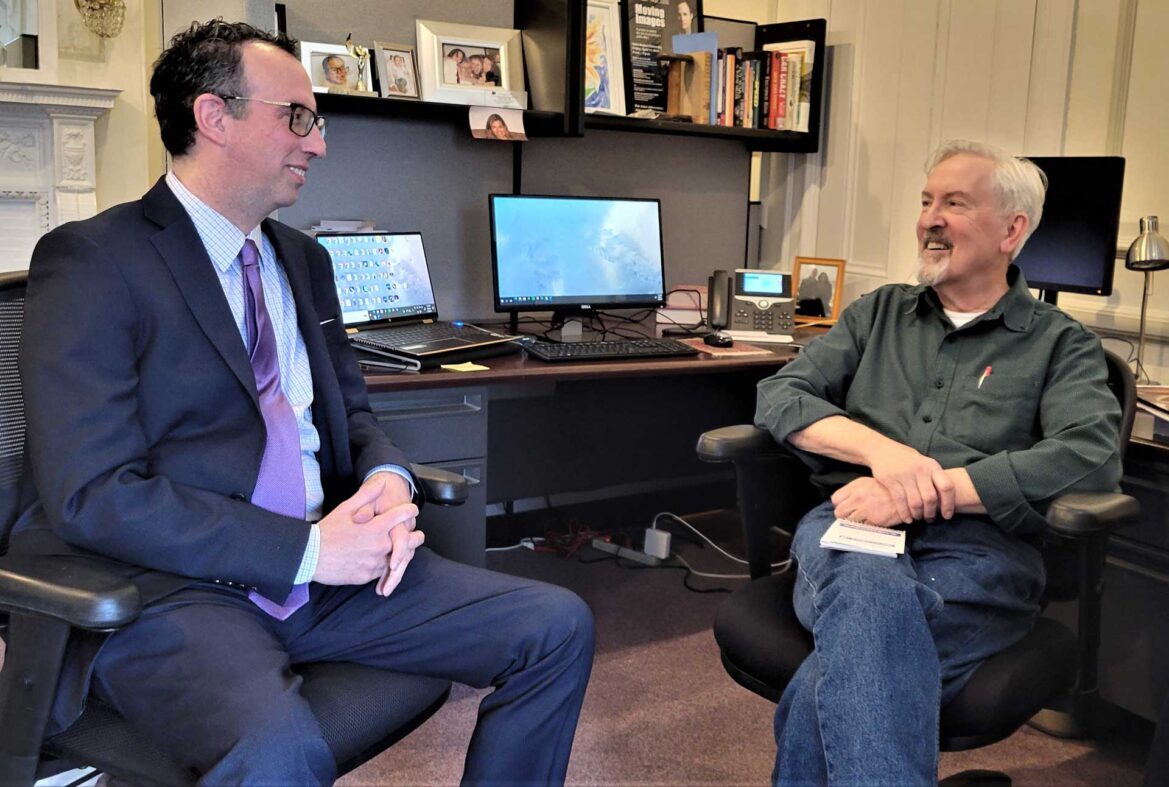“My hope with this particular body of work is that people begin to see their environment differently.”
By TARA MONASTESSE
Beacon Media Staff Writer
This story was originally published in the Warwick Beacon, a publication partner of Ocean State Stories.
PROVIDENCE — Umberto Crenca had a decision to make.
After retiring in 2019 from AS220, the community arts space in downtown Providence he had co-founded and cultivated for more than three decades, it was time for Crenca to find a new project that could channel his artistic energy. A newly cleared schedule meant the jack-of-all-trades art maven could now devote himself to the kinds of projects he usually had to squeeze in between other responsibilities. With the future wide open and boundless creativity at his disposal, he had to choose: What comes next?
“I decided I wanted to keep loving Providence,” Crenca said.
That love became the catalyst for “Paint the Town,” Crenca’s new solo exhibition at the Providence Art Club that will be shown through August 21. Displayed in the Dodge House Gallery, “Paint the Town” incorporates dozens of pieces from two of Crenca’s ongoing projects: “Divine Providence,” a series of photorealistic paintings that has grown over the past six years to include over 300 pieces; and “Blue Moon,” a fledgling series that portrays the city in a more fantastical, stylized manner.
On Thursday, August 14, the Art Club hosted Crenca for an artist’s talk at the Dodge House Gallery to discuss the exhibition and answer questions.
“My hope with this particular body of work is that people begin to see their environment differently,” Crenca said Monday afternoon in an interview at his home in Providence’s North End neighborhood. “Rather than taking it for granted, [I hope] that they begin to see how the forms and shapes out there relate to each other, the variety of textures and colors, and heighten their own personal experience with their environment.”
“Divine Providence” delves into the minutiae of urban life, teasing out full-fledged paintings from sights that might ordinarily pass under a pedestrian’s radar.
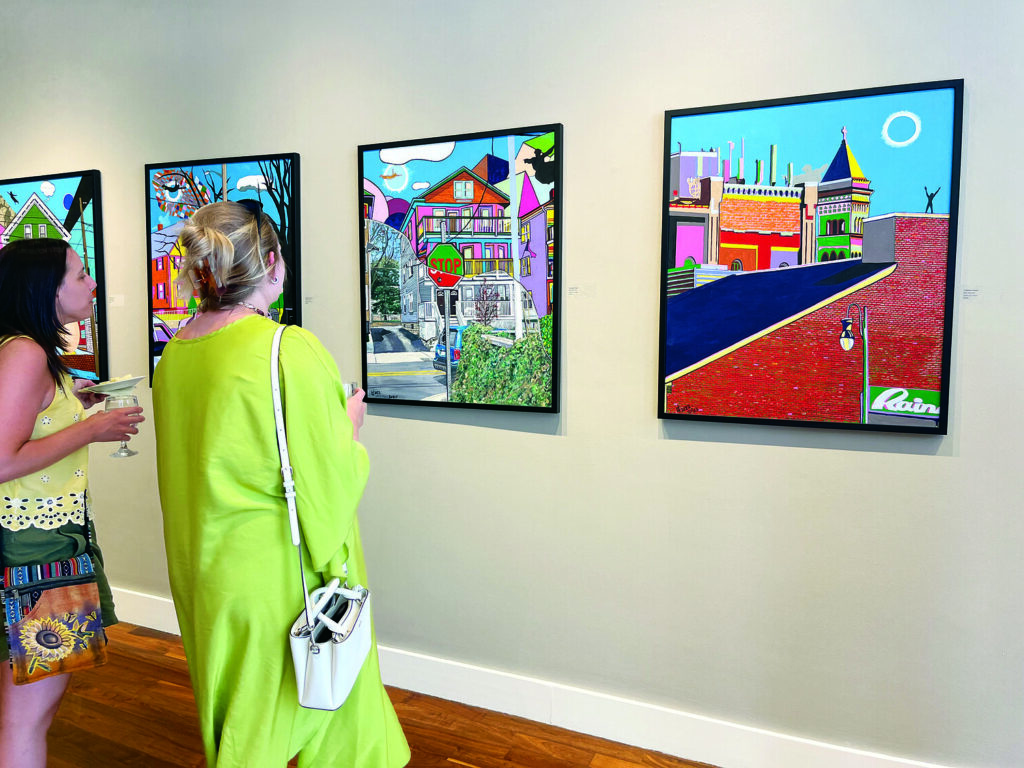
Sometimes Crenca’s gaze takes the form of an anonymizing close-up, zooming in so far on bits of urban infrastructure that they could belong in any city: a snarl of power lines against an azure sky, a tiny chickadee perched on a DO NOT ENTER road sign.
Other times the signature landmarks of the Creative Capital are unmistakable, including in a painting where the Weybosset Bridge arches over the Providence River in the background. Crenca snaps photographs of whatever captures his interest during walks through the city to use as references in his work.
Where “Divine Providence” depicts the city through a camera lens, “Blue Moon” shows it through a funhouse mirror. Described by Crenca as a “reaction” to the former collection’s realism, “Blue Moon” is characterized by heavily saturated colors, checkerboard patterns and stark geometry. Each painting is a bricolage of diverse materials, with the collection incorporating scraps of wallpaper, pieces of gold leaf and permanent marker lines alongside acrylic paints.
The collection gets its name from the phrase “once in a blue moon,” referring to an incredibly rare event.
“The fantastic colors and the gaiety of the work references” this idea, Crenca said. His goal is to give a playful new perspective to everyday sights in the city. To that end, everything is rendered in a whimsical light: even a rat emerging from the sewers to sniff the air as the State House’s facade looms in the background.
Crenca’s celebration of urban life comes at a fraught political moment, as President Donald Trump characterizes American cities as hotbeds of violent crime that warrant federal intervention. Having been born in Providence and living there for most of his life, Crenca pushed back against the idea that urban centers are overrun with danger.
“I walk miles and miles in this city, and it’s just people trying to get on with their lives,” he said. While there are challenges facing cities, Crenca said, he feels the problem isn’t the people that inhabit them: it’s skyrocketing food costs, rent that’s too “damn expensive” and other financial hurdles that limit the prospects of working-class families. Those limitations are personal: Raised as the son of factory workers, he finds the trajectory of his artistic career to be hard to believe at times.
“The idea that I’m now doing a one-person show at the Providence Art Club is kind of mind-boggling,” he said. Crenca had no idea growing up that the Providence Art Club even existed, much less that he’d one day be given an exhibition there.
The Art Club is located in the city’s College Hill neighborhood, a vertiginous plunge of Federal-style houses and elite institutions like Brown University and the Rhode Island School of Design. Though his artistic accomplishments have earned him nods from the area’s esteemed milieu, including an honorary doctorate from Brown, Crenca still takes his inspiration from the city’s working-class neighborhoods.
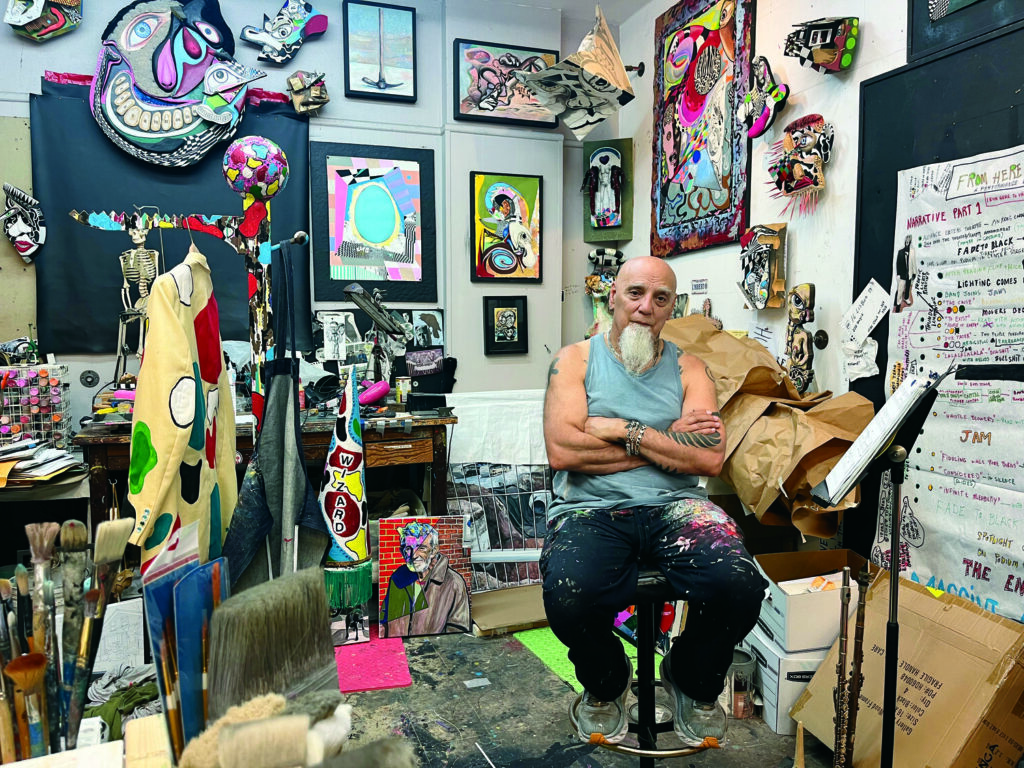
His artistic portrayal of Providence is “not so much about the iconic buildings and all of that, but more like the neighborhoods, and the bodega and the lemonade shop,” Crenca said. He intentionally leans into what he calls the “grit” of his subjects. His style is less schmaltz and more schmutz, favoring the stoops of three-decker homes over classical columns and bay windows. Small businesses also feature prominently in his work, especially those with quirky window signs that grab his eye.
While his career as a leader in the arts has been defined by idealism, “I don’t have a lot of faith or hope in the human species,” he confessed. Seated in his studio, Crenca ticked off the ways he felt humanity had failed to uphold basic standards of decency: a collective disregard for the planet’s wellbeing, human rights abuses by tyrannical governments across the world, a general arrogance that places humans above other creatures on Earth.
And yet, Crenca’s disenchantment stops short of misanthropy. He concedes that it’s impossible to completely reject humanity when he still wakes up every morning to produce art centering it, especially the intimate portraits of everyday Rhode Islanders he paints.
“It’s a dilemma for me,” Crenca said. “By the nature of the act, it professes some faith in humankind.”
He smiled and jutted out his right thumb, revealing the single word tattooed there: “Hope.”
Editor’s note: This story was originally published as the Lifestyles feature in the in the Cranston Herald, Johnston SunRise and the Warwick Beacon, publication partners of Ocean State Stories.

